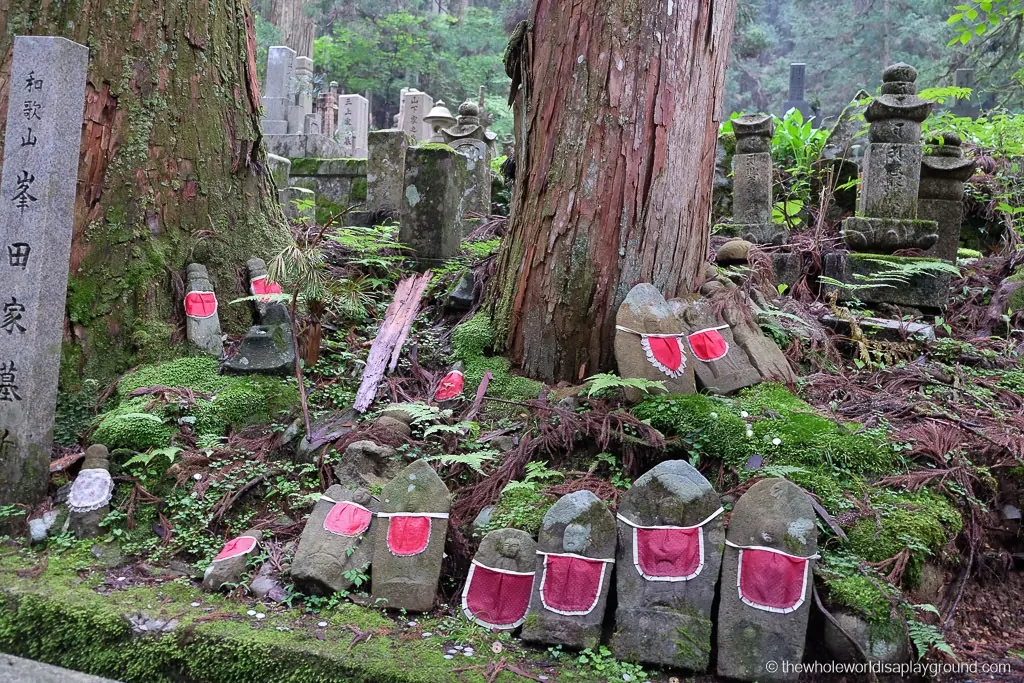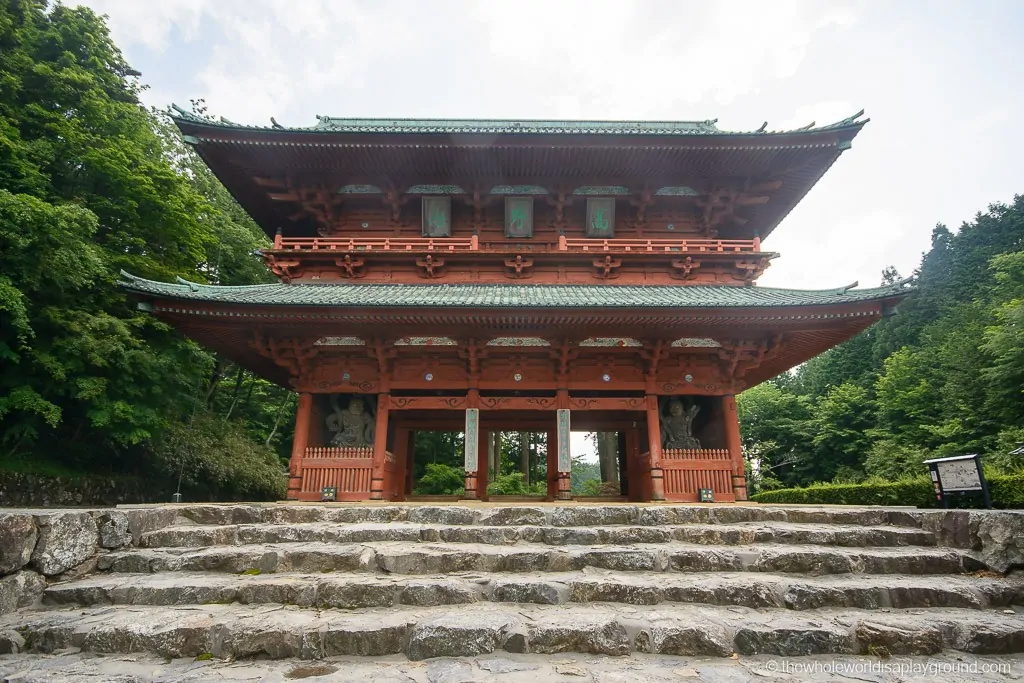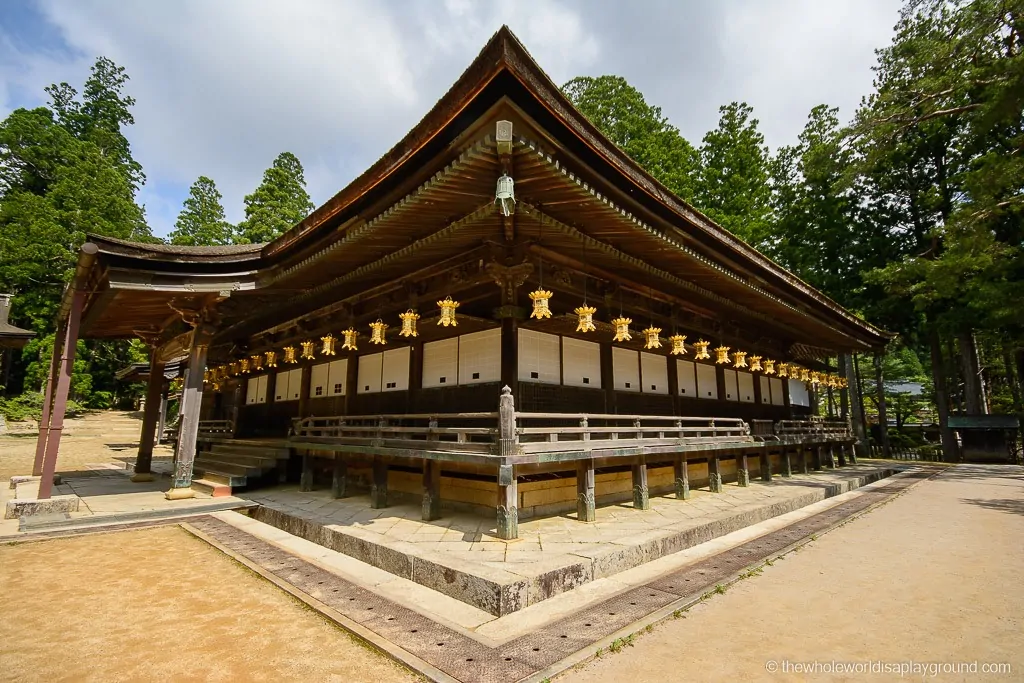Mount Koya is a remote sacred mountain and temple complex located high in the mountains of the Wakayama Prefecture south of Osaka in Japan. The time we spent in Mount Koya was easily the highlight of our time in Japan and we loved exploring all of Koya’s sights. It’s an intensely spiritual and peaceful place and we highly recommend anyone visiting Japan to spend at least one night in a Buddhist temple on this mountain retreat. We’ve put together this list of the best sights and things to do in Mount Koya. Happy Koyasan planning!
How to get to Mount Koya
Check out our posts on getting to Mount Koya while making the most of the JR Pass or, alternatively, taking a faster route on a private line.
We travelled with a green JR Pass which we purchased prior to travelling to Japan – you can check out the latest prices for green and ordinary passes on Japan Rail Pass where we purchased our JR passes
Click here to buy your JR pass now
Sim Card and Internet
One of the best investments you can make for your trip to Japan is to buy/rent a sim card or 4G hotspot. This will give you internet access while on the go throughout the cities in Japan, where free public wi-fi is extremely limited.
We have used both sim cards and 4G hotspots during our trips to Japan. A sim card is perfect if you just have your phone – just check the sim card is compatible with your phone The 4G hotspots are great if you have multiple devices that need internet or if you’re travelling a group. They also avoid any compatibility issues with installing a sim card.
We used the Klook app to order our sim cards for our last trip. The app is great as you can order in advance and pick up on arrival or from various departure cities.
- The best 4G hotspot on offer is provided by URoaming with unlimited data – check prices now!
- The best sim card is from Docomo (who we used) – check prices now!
Click here to order your sim card or 4G hotspot now
1 | Stay in a Buddhist Temple
Koyasan is the birthplace of Shingon Buddhism in Japan over 1,200 years ago and it is widely regarded as one of the most sacred places in the country. A night in a traditional Buddhist Temple, eating Buddhist vegetarian meals and watching the dawn prayer service is an intimate and unforgettable experience and a highlight of a visit to both Koyasan and Japan.
We stayed in a temple beside Okunoin Cemetery – this is the best location as it allows easy access to Okunoin late in the evening and early in the morning for the morning offerings. The best Buddhist temples close to the cemetery are
- Yochi-in: All rooms in Yochi-in are Japanese style with traditional futon bedding and is perfectly located for exploring the historic town of Koyasan. For the location, quality of accommodation and on-site onsen Yochi-in is very good value in Mount Koya – Check prices now!
- Shukubo Koya-san Eko-in Temple: this is the perfect temple for group meditation, delicious meals and moving morning prayers. It is located by the entrance to Okunoin Cemetary – Check prices now!
- Kumagaiji: A recently renovated 9th-century monastery that has a more modern feel than other temples, due to additions such as Wi-Fi and comfy chairs on the balcony of each room. The monks are happy for people with tattoos to use the onsen, something which is not usually common in Japan – Check prices now!
Click here for the best Mount Koya hotel prices
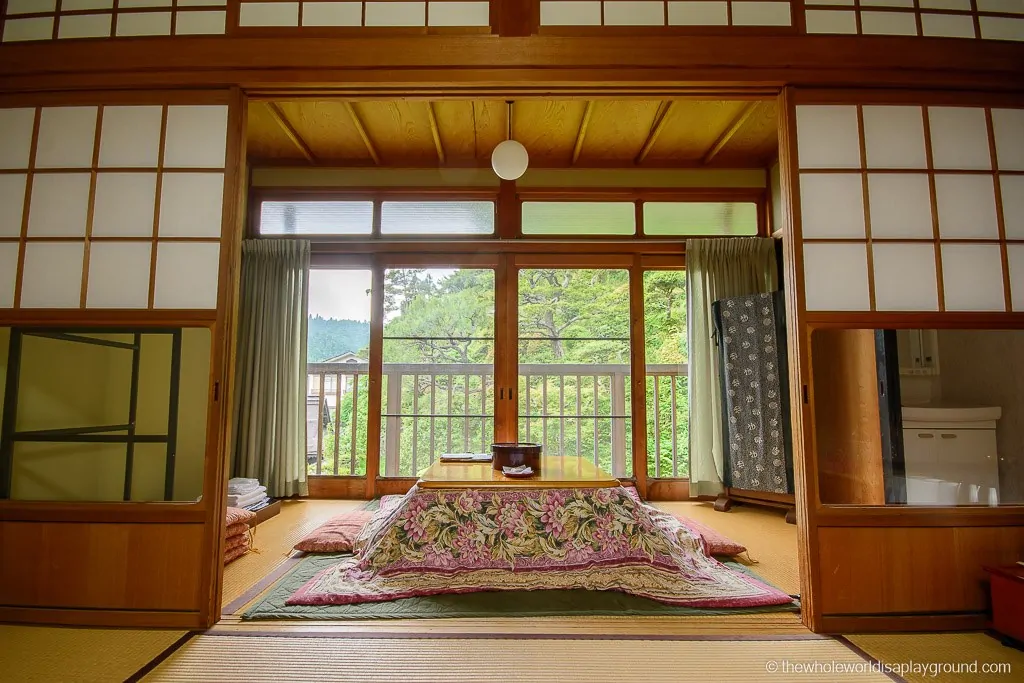
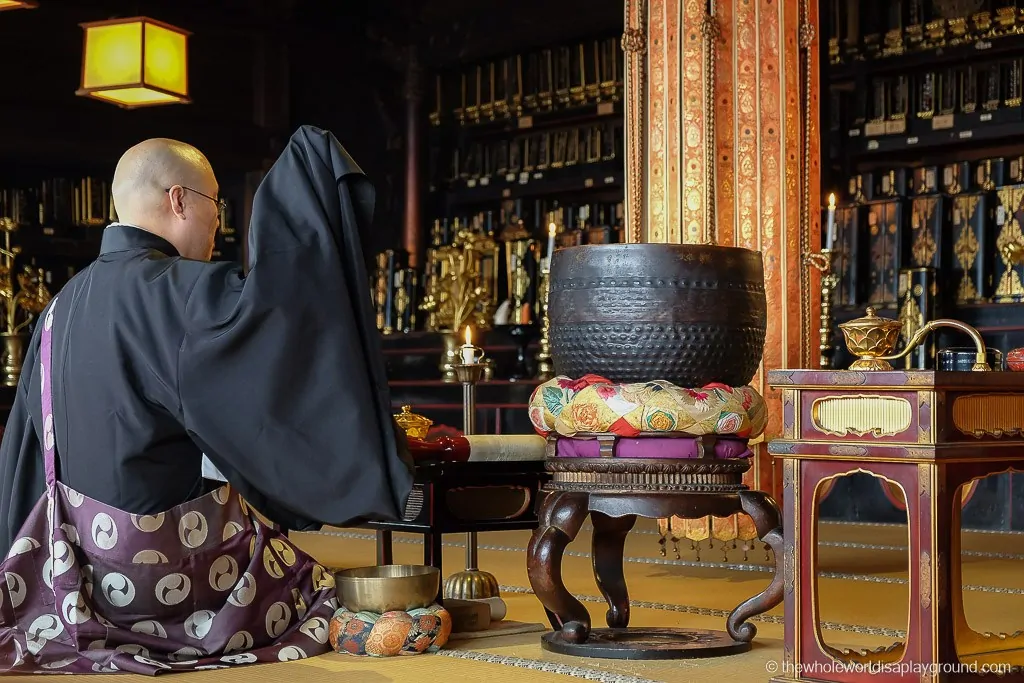
2 | Okunoin Cemetery
Okunoin is a dramatic Buddhist cemetery located on Mount Koya. The graveyard contains over 200,000 unique gravestones and monuments which dominate the forest and those resting there want to be close to Kobo Dashi, the founder of Shingon Buddhism, in death. Many of the memorials are draped with red hats or gowns and these red clothed Mizuko Jizos figures represent the babies and children who have passed by and are placed by parents to protect their children en route to the afterlife.
From the thousands of tombstones and memorials draped in red cloth, to the mausoleum of Kobo Dashi and the hall of lamps, a visit to Okunoin cemetery is something you’ll never forget. Read about our experiences in Okunoin Cemetery here.
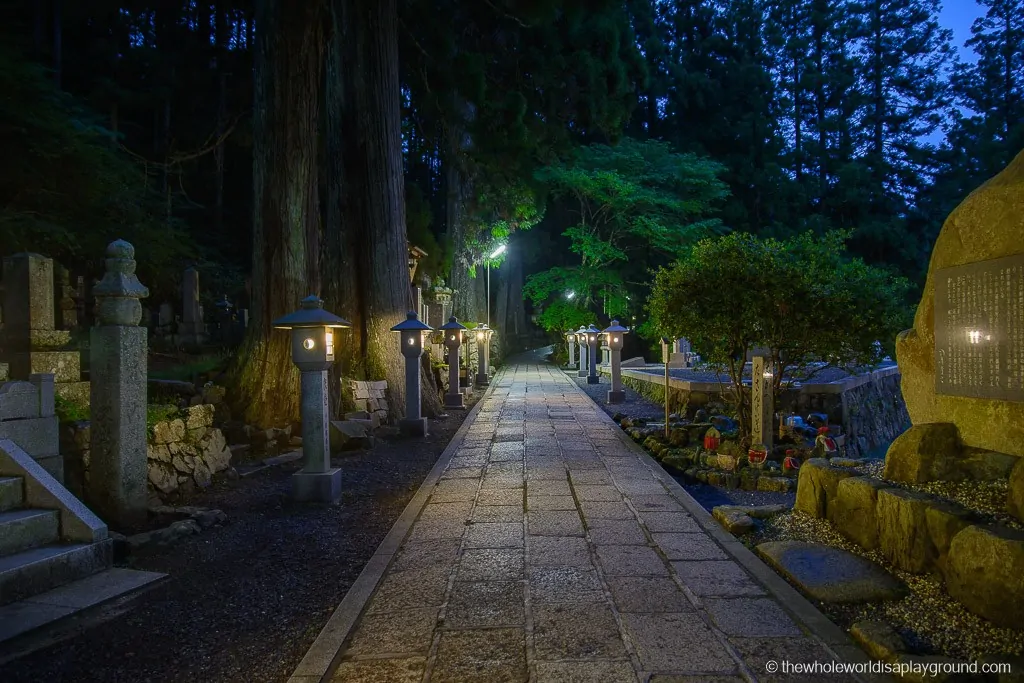
3 | Kobo Daishi Mausoleum in Okunoin Cemetery
The beliefs of Shingon Buddhism are fascinating: there are no dead in Okunoin, only waiting for spirits. It’s founder, Kobo Daishi, is believed to rest there in eternal meditation as he awaits the Buddha of the Future. When Kobo Dashi rises up to meet the Buddha of the Future so too will all those resting in the cemetery. Cross the Gobyo no Hashi bridge to the most sacred part of Okunoin and the Mausoleum of Kobo Dashi where visitors bow in respect to Kobo Dashi resting in eternal meditation. A wooden box, on the left of the path, contains the Miroku stone which is said to weigh one’s sins. It is customary to try to raise the stone to the highest shelf in the cabin and it is believed that the stone will feel lighter to good people.
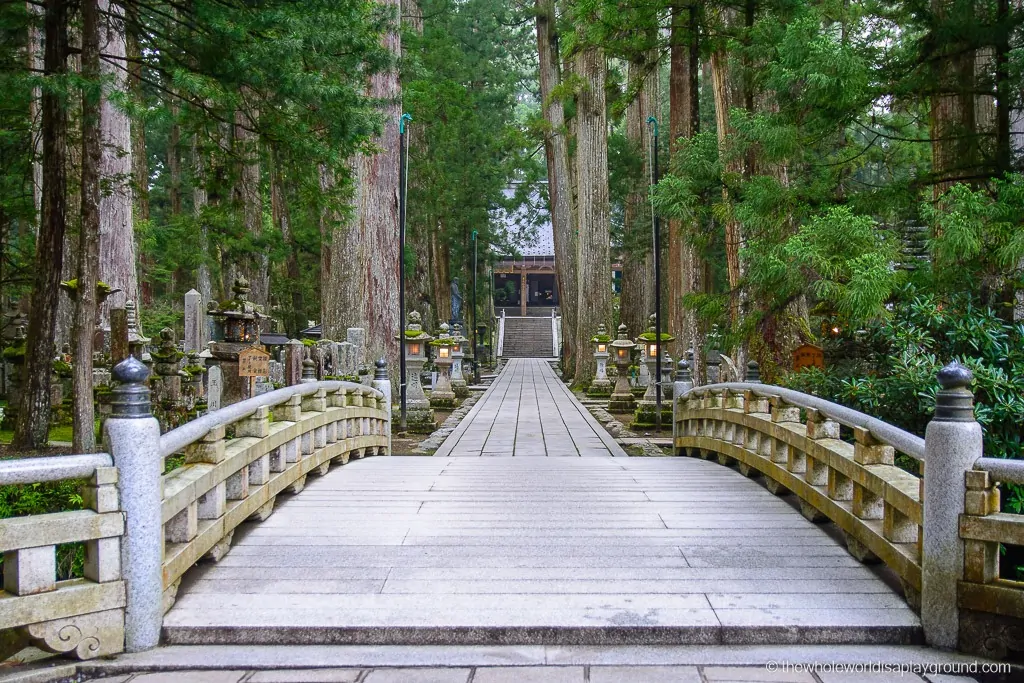
4 | Torodo Hall: The Hall of Lamps in Okunoin Cemetery
The magical Torodo Hall is one of the most incredible things we’ve ever seen on our travels. 10,000 lanterns fill the building from floor to ceiling, illuminating the darkness. They are said to have been illuminated for over 900 years and will continue for eternity.
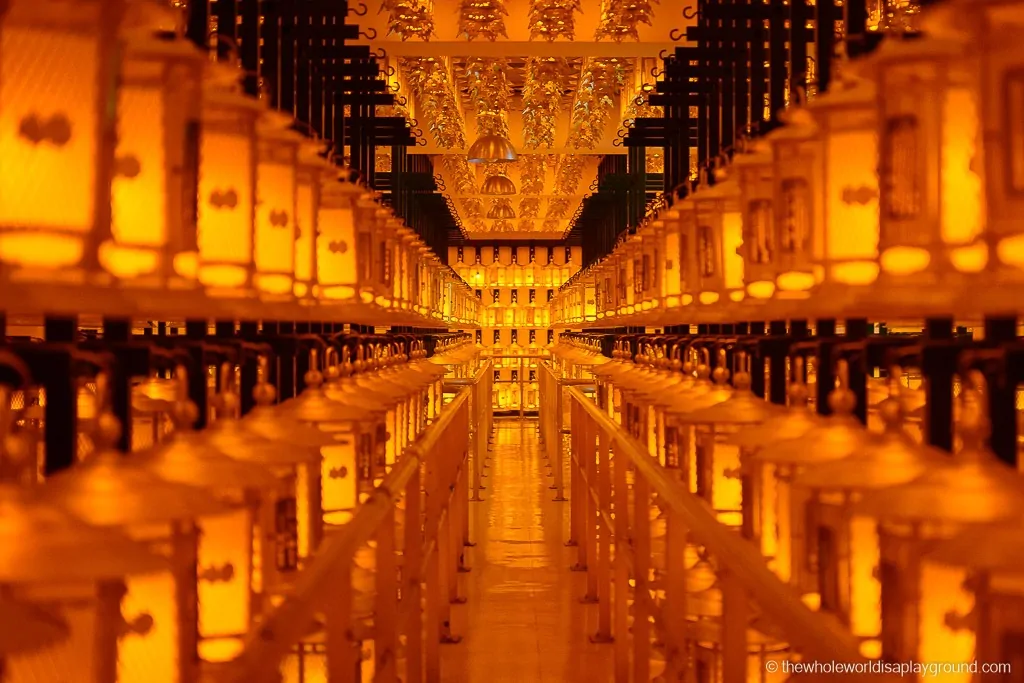
5 | The Morning Offering in Okunoin Cemetry
Each morning the local monks prepare a food offering for Kobo Dashi. The food is blessed and placed in a wooden box which the monks then bring to the mausoleum. The graveyard was completely deserted and we felt like we were the only people on the planet as we made our way up the snaking path following the golden robed monks to the mausoleum.
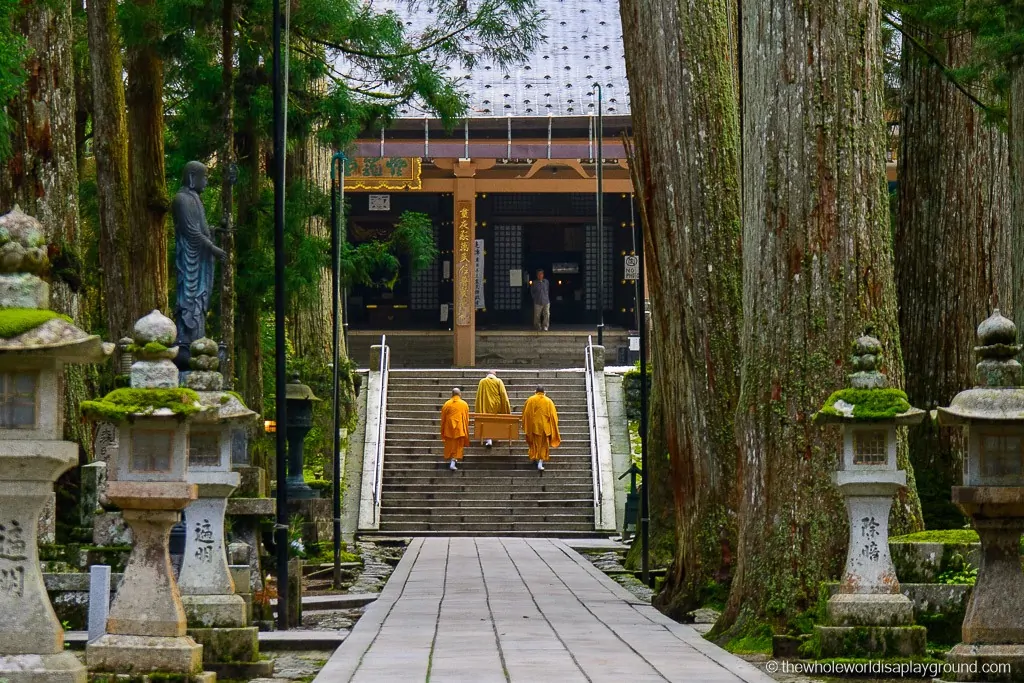
6 | Eat a Shojin Ryori meal
The diet of monks, shojin ryori is a Buddisht vegan cooking style and one of the highlights of a temple stay on the Mount is a shojin ryori style breakfast and evening meal. The meals are simple, colourful and full of flavour and are presented beautifully. If you are not staying in Koya overnight then Hanabishi is often touted as a good temple alternative.
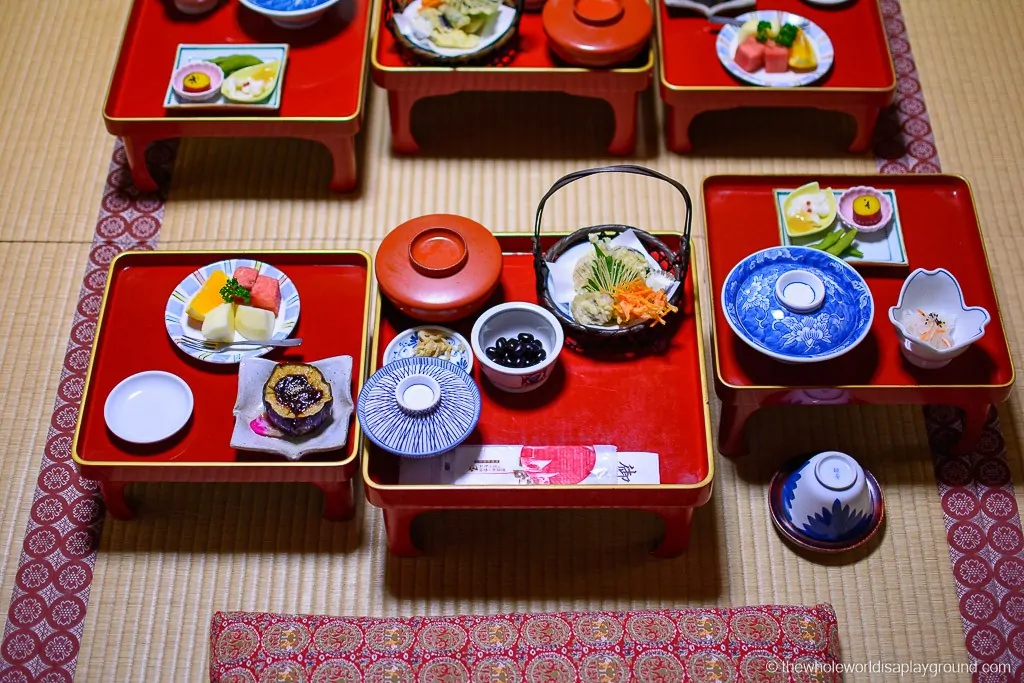
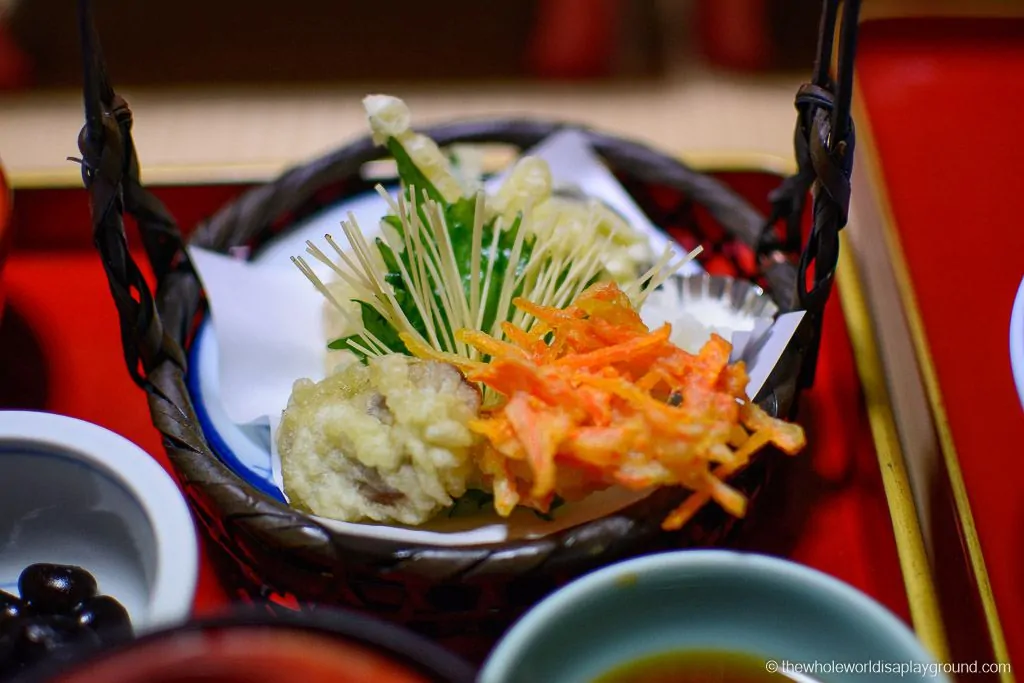
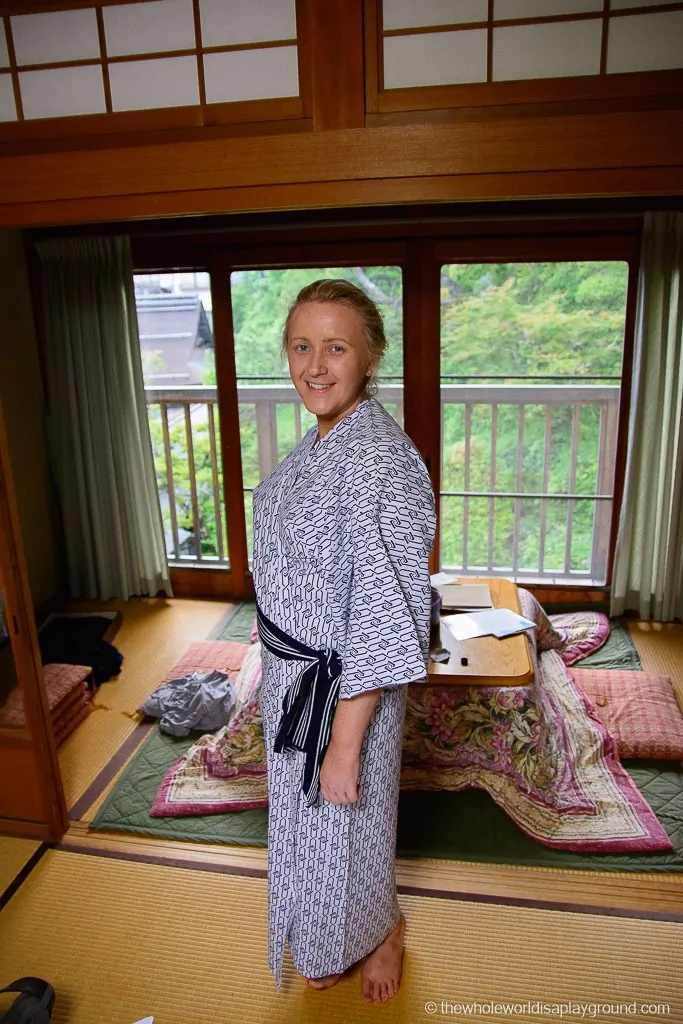
7 | Hikes in the mountains
With its network of trails Koya is a hikers dream with many embarking on the routes as a pilgrimage while others simply want to appreciate the stunning landscape. Many visitors hike the Fudozaka Trail which takes hikers from Gokurakubashi Station on a 2.5km trail to the Fudozaka-guchi Nyonindo temple. For the more adventurous there’s the Kohechi Trail, a challenging week long hike through the mountainous terrain.
8 | Ride the Gokurakubashi funicular
As Mount Koya is situated in the mountains the only public transport option for getting there is via the Gokurakubashi funicular which whisks visitors up the mountainside in a cable car between Gokurakubashi stations and the Koyasan bus station. The views are incredible and the journey is a real treat!
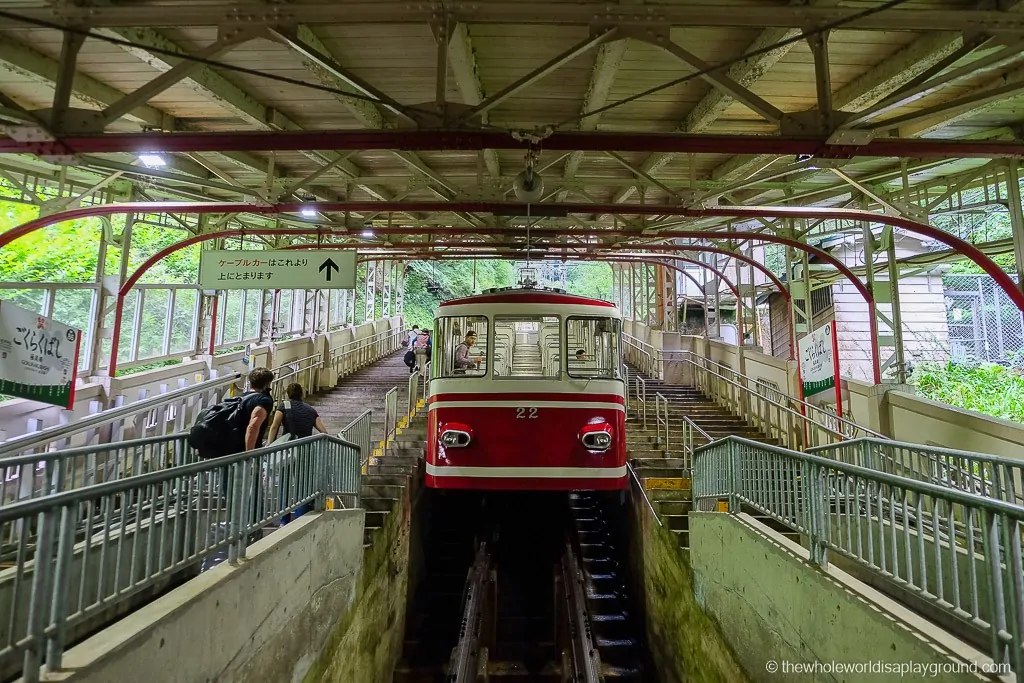
9 | The Daimon Gate
The traditional entrance to Koyasan, visitors to Mount Koya are greeted with the grand Daimon entrance gate marking the home of Kobo Daishi. This huge gate has stood in this location since the 12th century and its two Guradian Deities stand guard inside the gate to greet the many pilgrims to the holy mountain over the centuries.
10 | Kongobu-ji Temple and Stone Garden
Kongobu-ji is the head temple of Shingon Buddhism in Koyasan and its grounds are home to Japan’s largest rock garden. The garden contains rocks from Shikoku, the birthplace of Kobi Dashi, and the centerpiece is 140 granite stones which are arranged to represent a pair of dragons emerging from a sea of clouds to protect the temple.
11 | Kondo Hall at the Garan temple complex
Gargan is Koya’s main temple complex and legend has it that when Kobi Dashi was searching for a home for his religion he threw his sankosho, a martial arts weapon, from China and it landed in the trees of the Koyasan and so he commenced work on the Garan temple complex. The tree still stands in the grounds today. Kondo Hall is one of the highlights of the numerous temples in the complex. The hall hosts religious ceremonies and houses a statue of Yakushi Nyorai.
12 | Konpon Daito Pagoda at the Garan temple complex
Konpon Daito is known as the Great pagoda and the distinguished pagoda stands at 145 feet tall. It represents the central point of the universe in Shingon Buddhism.
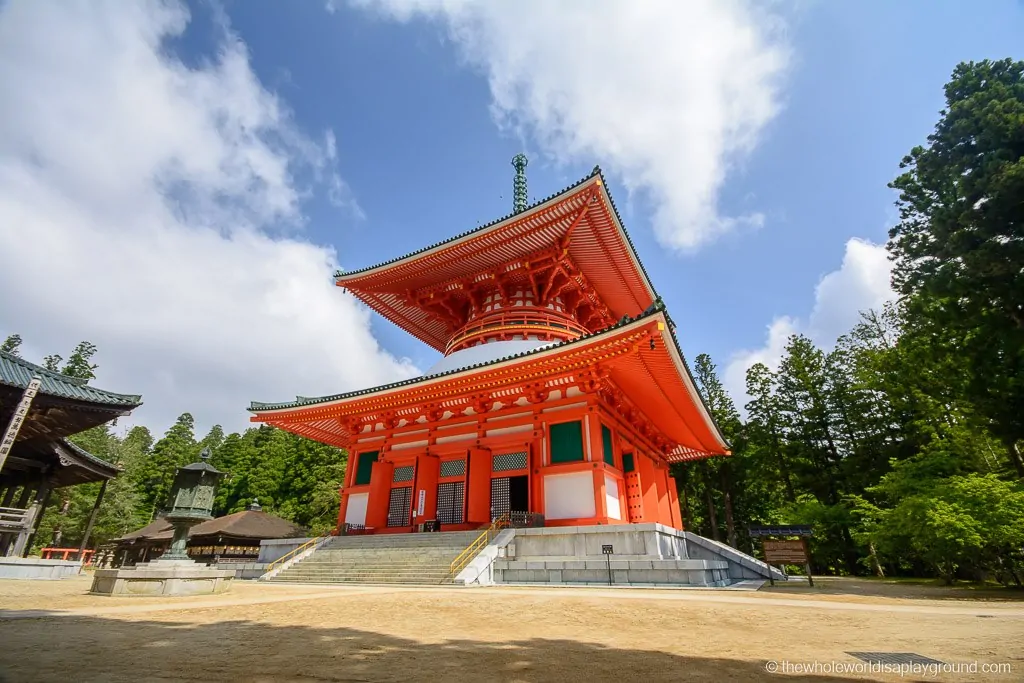
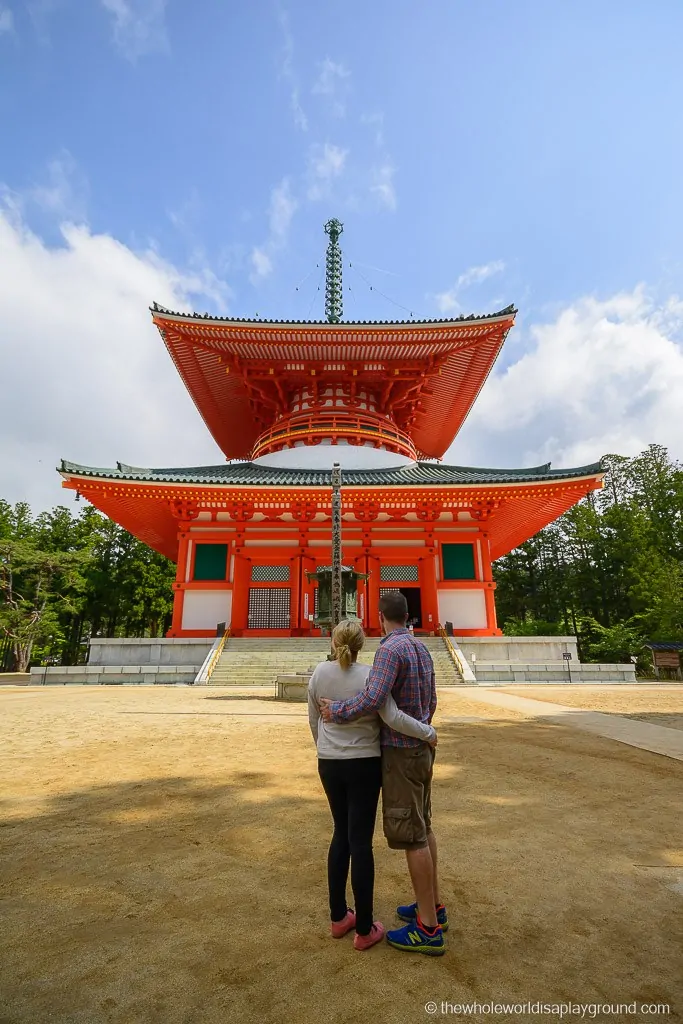
13 | Daito Bell at the Garan temple complex
The 4th largest bell in Japan, the Daito Bell was completed by Kobo Dashi’s successor. It rings five times during the day beginning at 4am, again at 1pm, 5pm, 9pm with the final bell of the day sounding at 11pm.
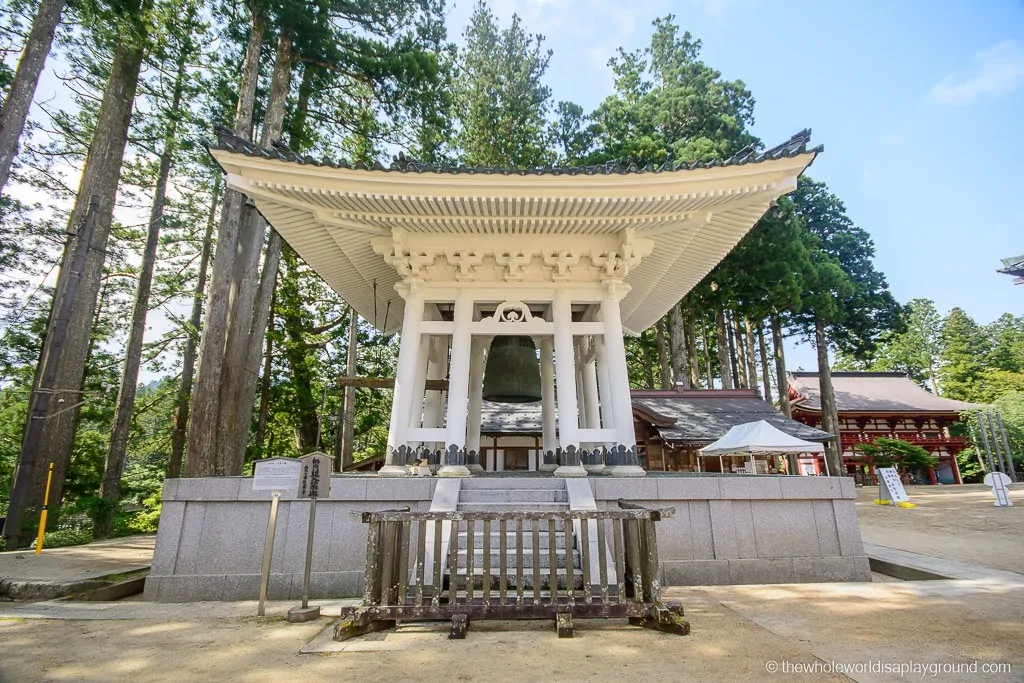
Travel Guides
Here are some of the best travel guides for planning your Japan trip. We personally used the Lonely Planet Japan series for our trip planning.
